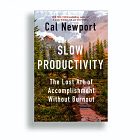Do you know how much time you spend each day doing productive work?
There’s a good chance probably not as much as you think.
With so many distractions available at your fingertips, today’s knowledge workforce spends more time talking about work than actually doing it.
Fire Your Inbox is a workshop designed to help you reign in one of the biggest time sucks in your workflow: your inbox.
In the workshop you’ll learn:
How the state of work is changing
Why you need to protect your time
How you should actually be using your inbox
A system to help you manage your emails
By the end, you’ll know how to contain your inbox, putting you in control of it. Rather than working for your inbox, you’ll learn how to make it work for you.
The state of work is changing. Companies want to hire productive workers, not busy workers.
According to the International Monetary Fund, 40% of the global workforce is going to be exposed to artificial intelligence.
Depending on your line of work, “exposure to AI” can mean one of two things:
AI will do your job for you
You will need to know how to use AI to do your job
Think of secretaries or administrative assistants to illustrate what this looks like. Almost every office in the pre-internet age had secretaries to perform administrative tasks like coordinating internal communication or making travel arrangements.
With the dawn of email and personal computers, the demand for secretaries declined, but they didn’t completely disappear. Offices still employed administrative assistants to do these tasks, rebranding them as office managers. To move into this role, you need to know how to use specific tools – like email or travel booking websites – to do your job.
AI will likely have the same effect on today’s knowledge workforce. AI probably won’t displace workers because it can do a job better than humans – at least not yet. AI will replace humans because humans are too expensive and inefficient at getting certain jobs done.
Think about it: AI doesn’t require PTO and it isn’t going to have to ask you for a raise every year. You don’t have to mentor an AI or provide incentives to show up to work. AI can work around the clock and it can do so without uttering a single complaint.
While humans would like to think we’re good at getting work done, we’re also incredibly inefficient. According to a study conducted by Microsoft, 57% of the time workers spend using Microsoft products is used to communicate about work.
In his book Slow Productivity, Cal Newport refers to this kind of work as “pseudo productivity.” It’s busy work that might be relevant to getting a job done, but it doesn’t move the needle when it comes to finalizing deliverables or completing projects.
Email often falls into this category of work. Think of status updates, talking about projects, or reading news bulletins from corporate. These are things you do to perform the act of working but when you look at the bottom line, this type of work generates little if any value. If anything, it creates more overhead, what Newport refers to as an administrative task.
When it comes to technological displacement, workers generating low value work will likely be first on the chopping block. And because there won’t be a demand for the skills of displaced workers – just like there wasn’t a demand for typewriter-wielding secretaries when personal computers rolled out – workers who don’t adapt to the change in work will get left behind.
To prepare yourself for the inevitable exposure that you’ll face, you need to make yourself more productive. That starts with building systems and learning how to properly use knowledge work tools.






